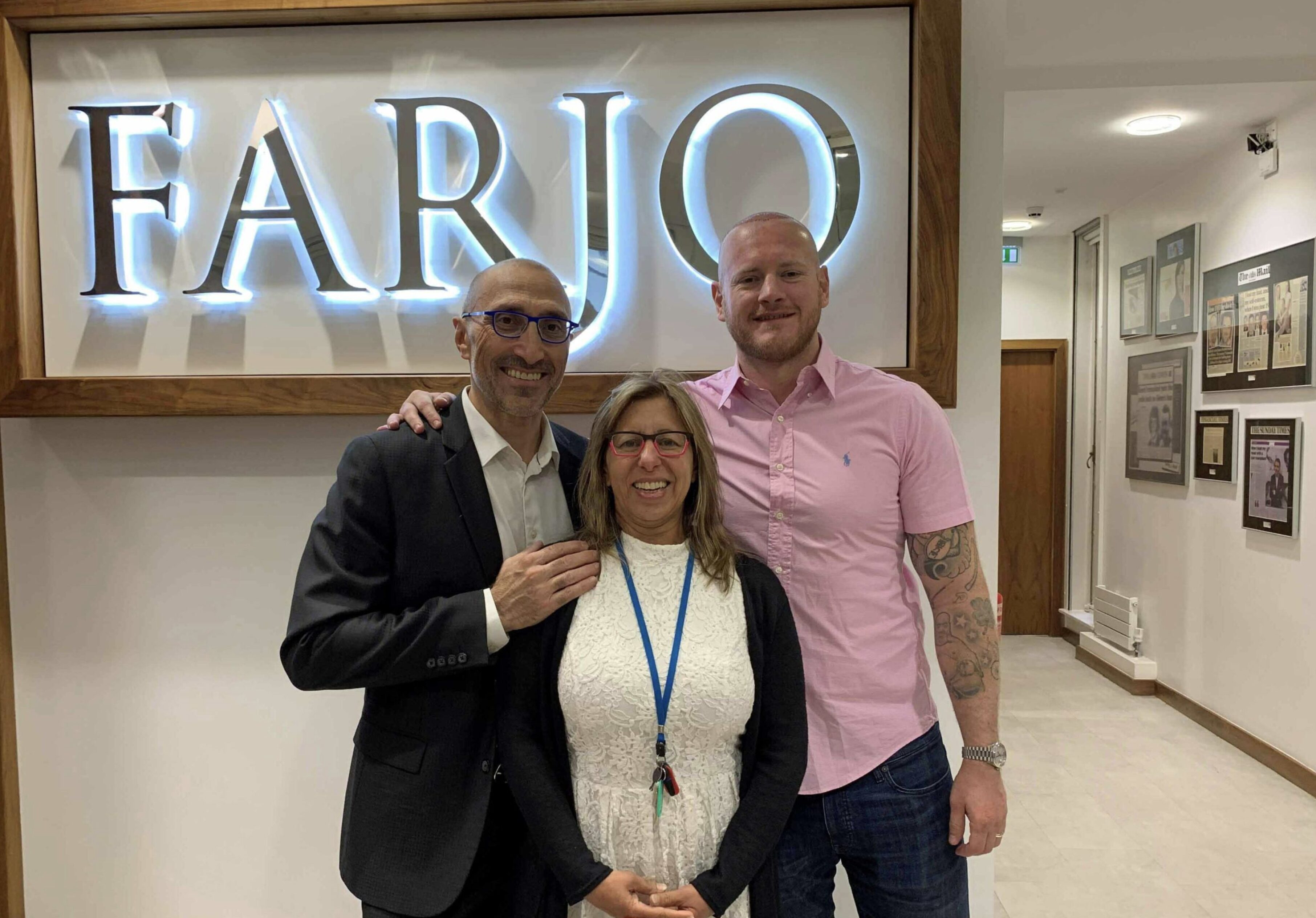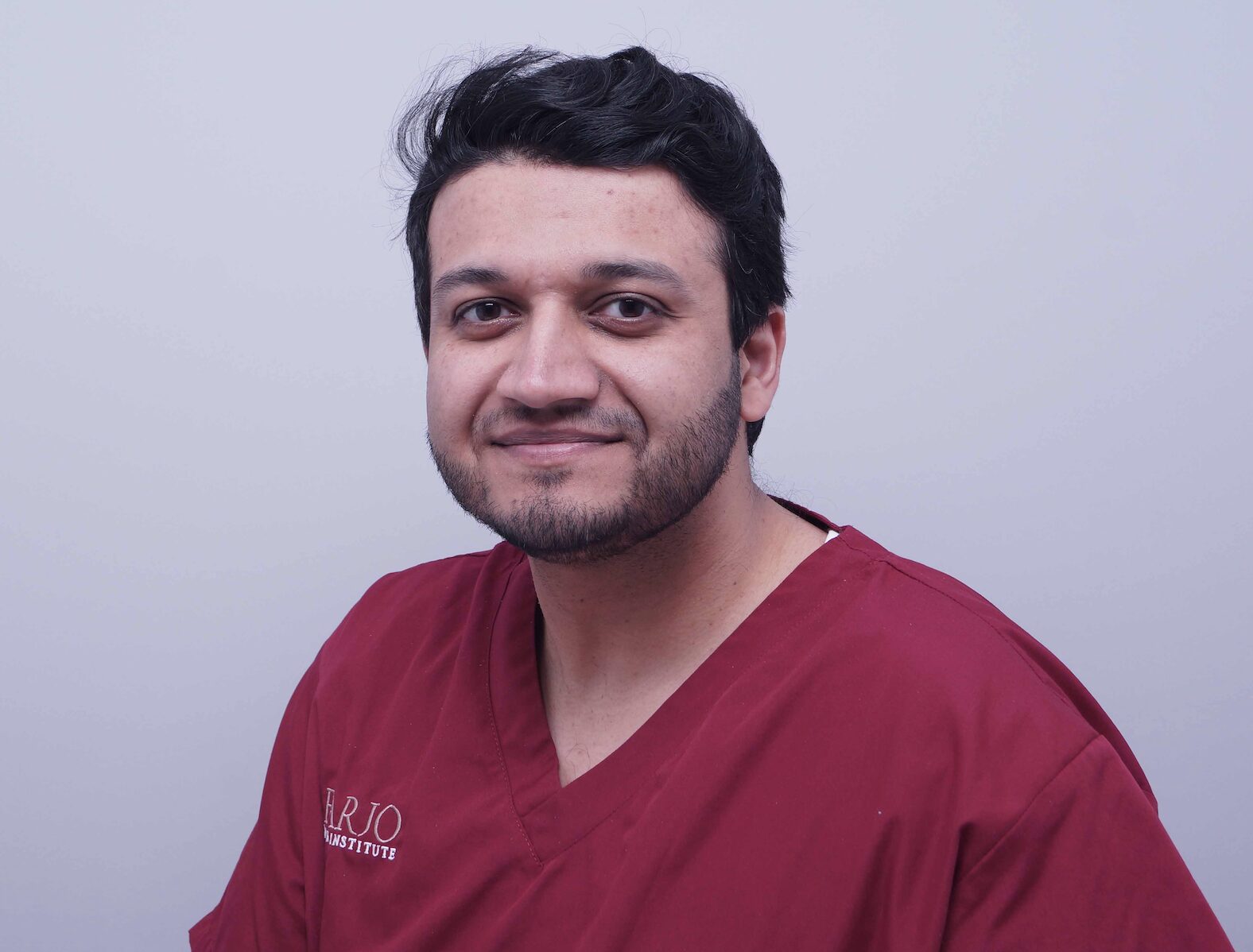Amie’s hair transplant miracle
9th April 2008
At the age of 12, Amie Cameron was diagnosed with a two-inch tumour at the base of her spine. While she is now in the clear, years of chemo have left her with partial hair loss. Ruth Addicott met her to hear her incredible, inspiring true story and what led her to undergo a revolutionary hair transplant.
Breezing into a bar in the centre of Brighton with a huge smile and a new haircut, Amie Cameron from Peacehaven looks like any other 23-year-old.
Apart from a scar on her back, there is no indication to suggest that ten years ago she was in a wheelchair, crippled with cancer. Having gone through years of chemotherapy, which left her devastated at the prospect of permanent hair loss, she is one of the few women in Sussex to have undergone a hair transplant.
“Do you want to see my scar?” she says, cheerily lifting up the back of her top to show me the mark.
Despite getting on with life and moving to Brighton to start a new job as a paediatric nurse at the Royal Sussex Hospital last October, the sixinch scar is a chilling reminder of the two-inch tumour she had removed when she was 12.
Amie’s symptoms began when she was just ten years old, with a dull ache in her right ankle. She was living in Rotherham, South Yorkshire, at the time and as the weeks went on, the pain got worse and worse, keeping her awake at night. Despite repeated visits to doctors and A&E, they could find nothing wrong. Amie was even accused of “making it up” at one stage and referred to a counsellor in case it was linked to the fact her parents split up when she was three.
Frequently in tears, she put up with the pain for six months, even putting her foot in snow once, in a desperate attempt to numb it. “It was absolute agony,” she says.
As the months went on, Amie also began to get pain in her back. She had difficulty bending over to touch her toes and if someone accidentally pushed her or shoved a bag in her back at school, she would double up in pain.
Eventually, after almost a year, she was referred for a scan just before Christmas and diagnosed with a tumour “the size of a man’s thumb” at the bottom of her spine. She was told it would require an eight-hour operation and she was booked in for Boxing Day.
Not wanting to miss the Christmas celebrations, Aime postponed the operation until January 8, 1996. Scared, confused and not knowing what to expect, all she can remember is being spoiled. “My aunt bought me a new silky dressing gown and I remember the surgeon laughing because I had these nice new silky pyjamas to match,” she says.
The surgery was a success and after a brief spell in hospital to recover, Amie was allowed home.
A year later, however, she was given some further bad news when a routine scan showed the tumour had spread to her brain and spine. Aged just 14, Amie had to have four lots of chemotherapy in the space of six months and within weeks she had begun to lose her hair.
“The first time I noticed was in a science class,” she says. “I started to twist a strand of hair around my finger and it just came out in my hand.
My friend said, Oh, my God! You’ve got a massive bald patch’. When I stood up, I could see there was hair all over the floor.”
Amie did her best to pretend it wasn’t happening, but every time she touched her hair, it came away in handfuls.
At the height of her teenage years, when all her friends were trialling the latest new hair styles, Amie was left with the option of wearing a hat or a wig – both of which left her feeling incredibly self-conscious. She found herself praying people wouldn’t ask questions and was close to breaking point on several occasions.
“I was on my way to school once and I was convinced the wig was slipping forward,” she recalls. “It wasn’t – but I was so self-conscious. It was horrible. I wanted to cut though the lobby and check it in the toilets as soon as I could but one of the teachers stopped me. He said, Where do you think you’re going?’ I didn’t want to explain and he made me walk the long way around the school. It absolutely traumatised me. I eventually ran into the loos and remember just ripping the wig from my head and sitting there, crying. I was weeping for hours until my form teacher found me. I just wanted to be normal.”
Amie also took to wearing beanie hats but even then risked the ordeal of being told to take it off in class. After weeks of her hair falling out in clumps, she finally decided enough was enough and chopped it all off.
“I was so fed up. I ran upstairs and cut it all off,” she says. “I looked in the mirror after I’d done it and thought I can’t believe I’ve just done that’.
My mum, sister and aunt who were all in the house at the time, looked at me in total disbelief. Then we laughed.”
Amie chuckles as she recalls the story and says it is this sense of humour which has helped her get through some of the toughest times.
“Initially, when they said my hair was going to fall out I wept and wept.
I was heartbroken,” she says. “But when it actually came to it, I felt so weak in myself, brushing my hair was the least of my worries.”
The chemotherapy left her with lots of side-effects, including panic attacks, sickness and diahorrea as well as bizarre food cravings.
“At one point, I had a real craving for Yorkshire pudding in gravy,” she muses. “My mum spent half an hour making it for me and by the time she’d finished, I couldn’t stomach it. I also went through a stage of pizza and pastel-coloured lollies. Then they turned my stomach and I became obsessed with Dorito crisp sandwiches.”
She grins as she recalls one particular episode when a Dorito actually put her in hospital.
“I was eating a Dorito sandwich once and a corner of the Dorito broke off and cut my gum,” she recalls. “The next morning I woke up and my gum was still bleeding. I couldn’t work out why at first and then I remembered the Dorito sandwich. Because my defence system was down, my mouth hadn’t healed properly and I was whisked into hospital for a blood transfusion.
“I nearly bled to death thanks to a Dorito sandwich,” she muses. “We laughed about it afterwards. We always laughed. It was the only way to get through it.”
In spite of the incredible courage she herself has shown, Amie says a lot of it is down to her mum, Sharon, who has been there for her since the start.
“I wouldn’t have been able to get through it without my mum,” she says.
“She was there for me the whole time.”
It was also her mum who made the recent enquiry and found out about the hair transplant.
Once the course of chemo finally came to an end, Amie’s hair began to grow back. Having always been a brunette, she was bemused to find it growing back blonde.
A further course of radiotherapy prompted it to fall out again and while most of it did grow back, in her original colour, Amie was left with a bald patch at the front of her head.
Despite acquiring an impressive collection of headbands and hats, the patch left her feeling too embarrassed to go to the hairdresser’s and conscious that people could see it in the street.
After seven years of putting up with it, she finally decided to do something about it when a dermatologist referred her to the Farjo Hair Institute .
The centre, in Manchester and London, has built a reputation worldwide for using the latest hair transplantation techniques and has a waiting list of up to five months, with patients travelling from as far as the Middle East, Australia and America.
Given the treatment is also suitable for men with hair loss, Amie has followed a long line of celebrities, including former EastEnders actor Shaun Williamson, ex-England rugby player Kyran Bracken, and TV’s Dragon’s Den judge Duncan Bannatyne in undergoing the technique.
Amie was advised to have three treatments – each of which costs £5,000 and can be done in a day. She had the first one on the NHS in 2005 and has appealed for funding to have a second treatment in August.
The technique dates back to the 1930s and has developed significantly in recent years. Surgeons removed a piece of her scalp containing hair follicles from the back of her head and the follicles were reinserted into the front. “I had 1,900 grafts put in and 1,400 grew back,” she explains. “I can actually put my hair in a parting now and it doesn’t look obvious.”
The hair transplant has had a huge impact on Amie’s confidence and she is now hoping to raise awareness to help other people who have also suffered the trauma of hair loss.
Having improved dramatically in the past ten years, Amie is now looking forward to the future.
“There is always that thought at the back of your mind that it could come back but, for now, I’m doing well,” she says. “I didn’t know anything about hair transplants before and it’s made such a difference. For people like myself, it’s crucial.”


